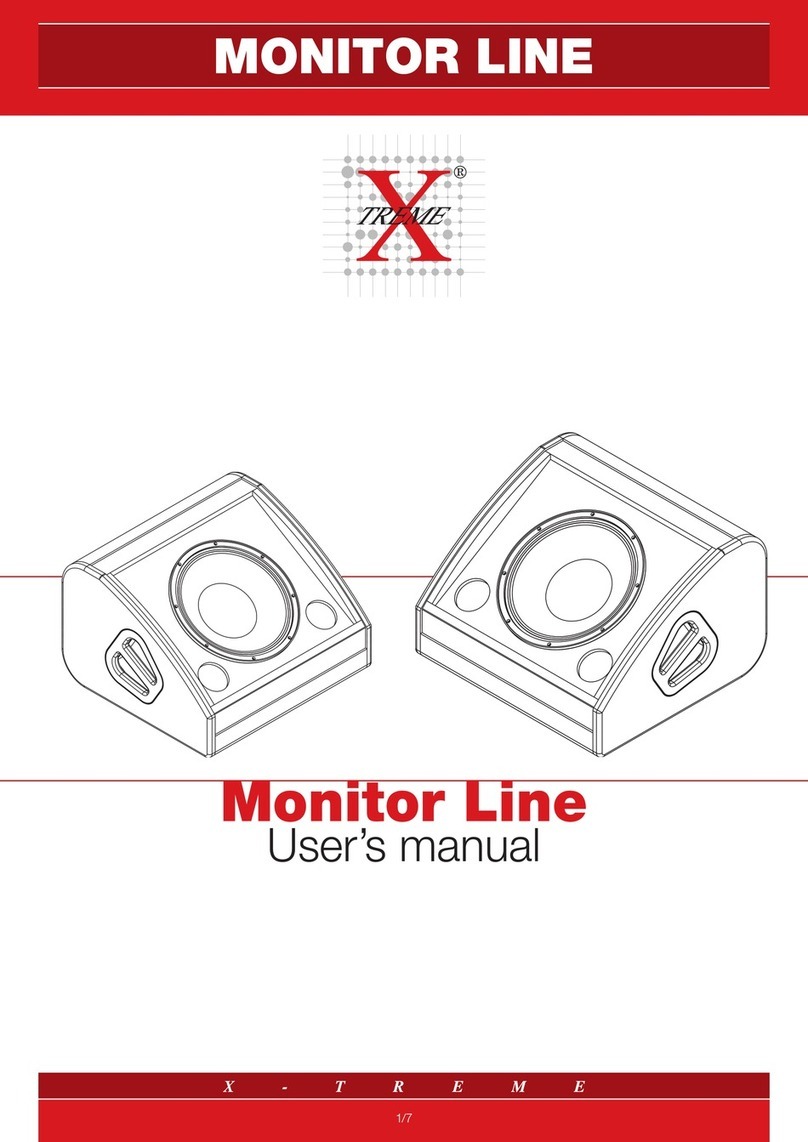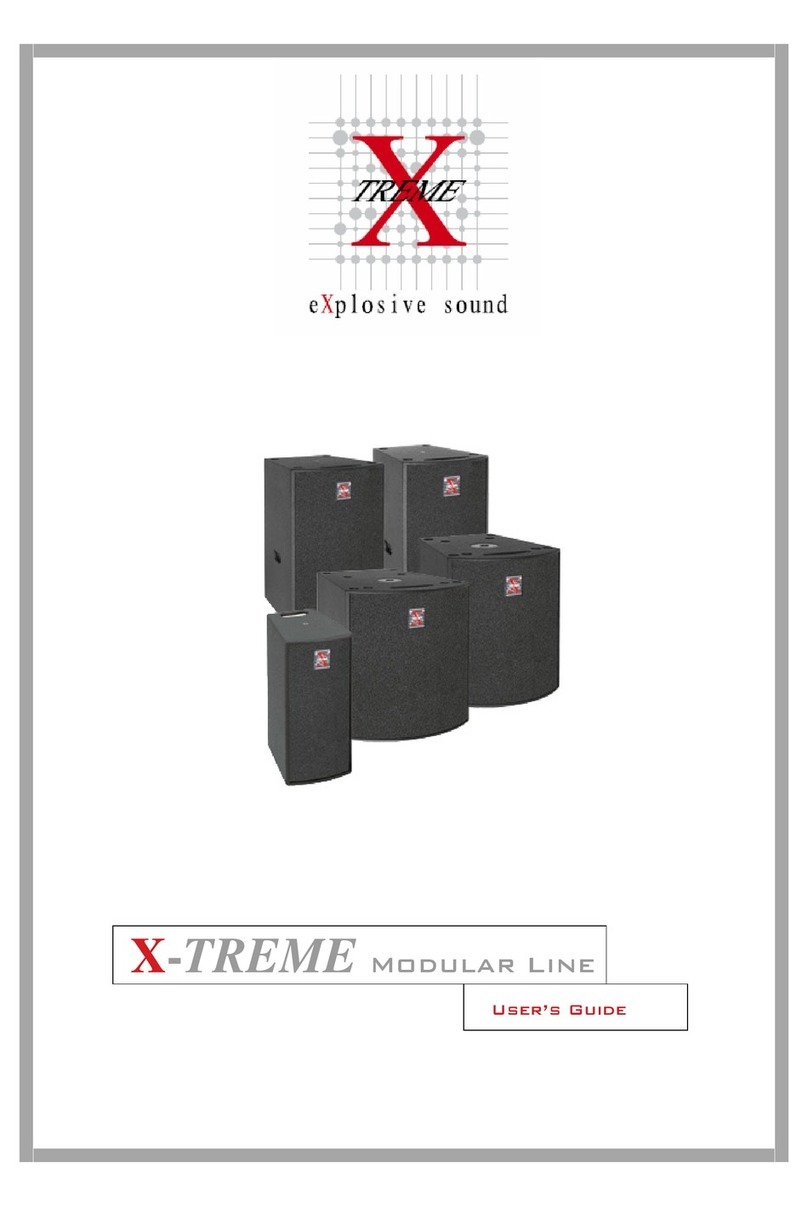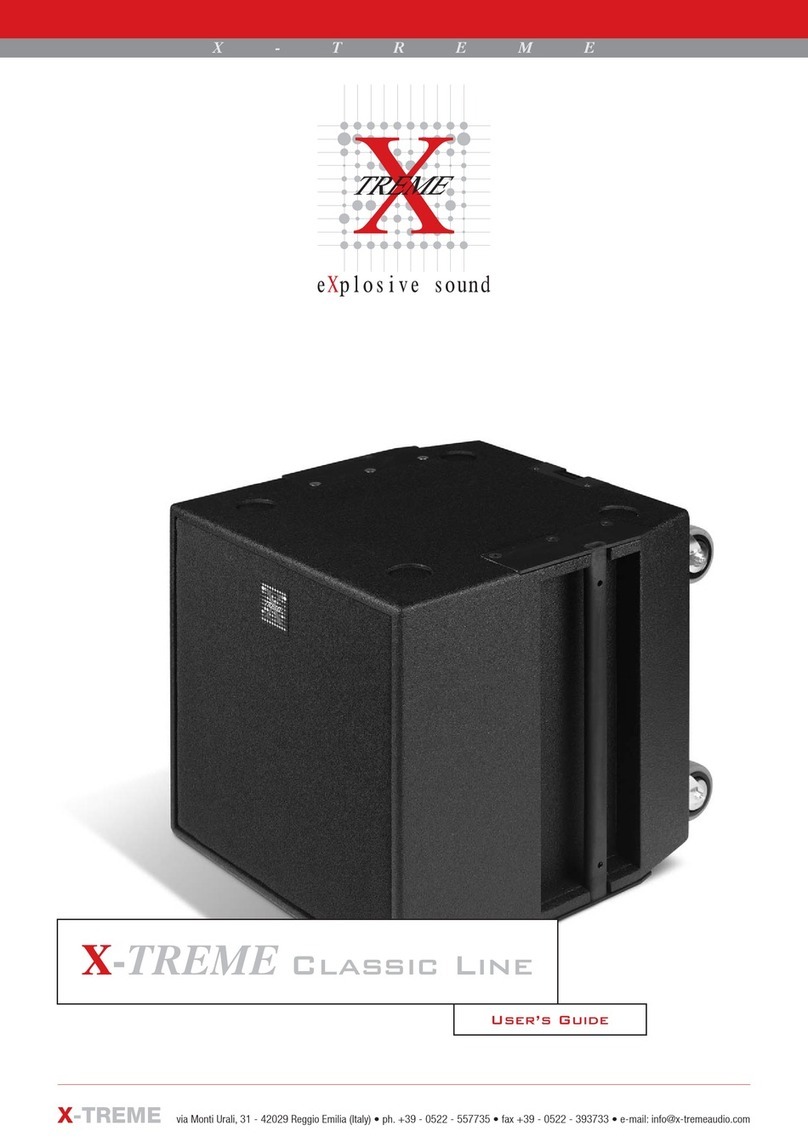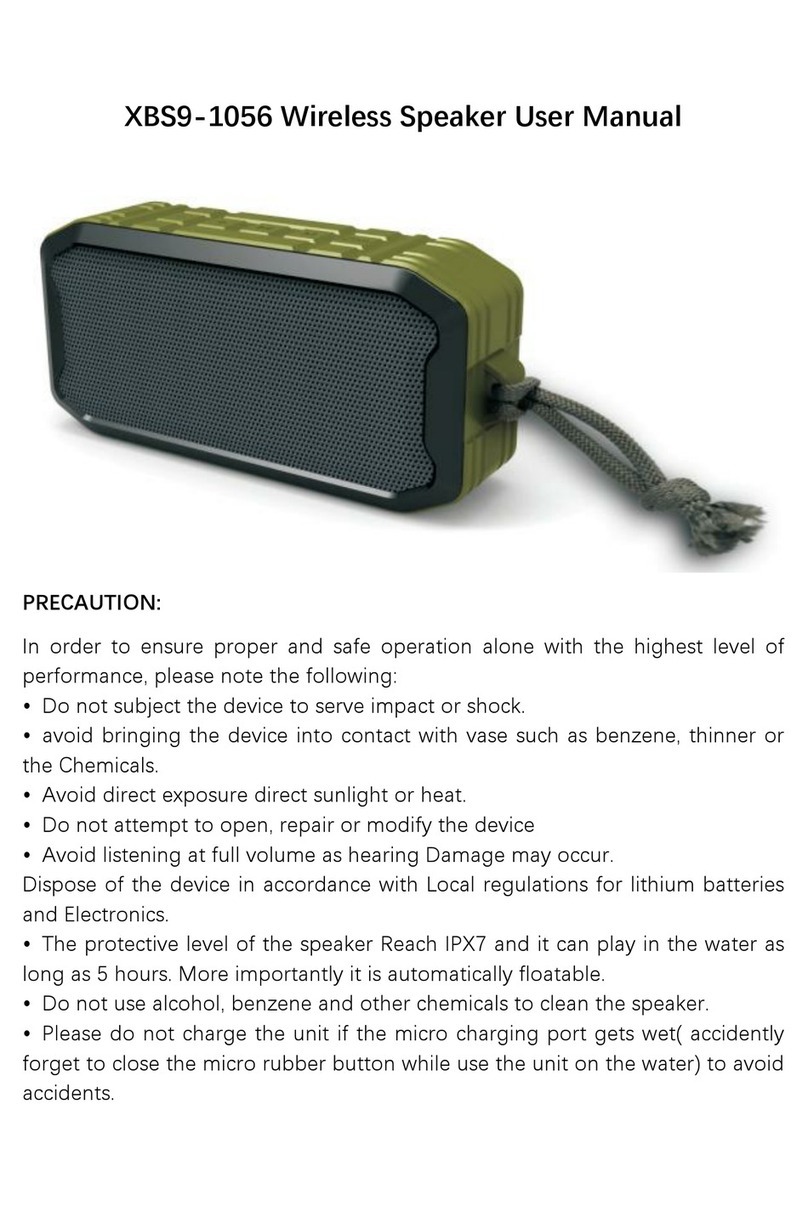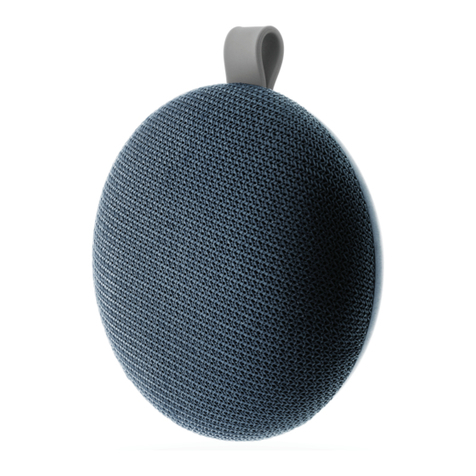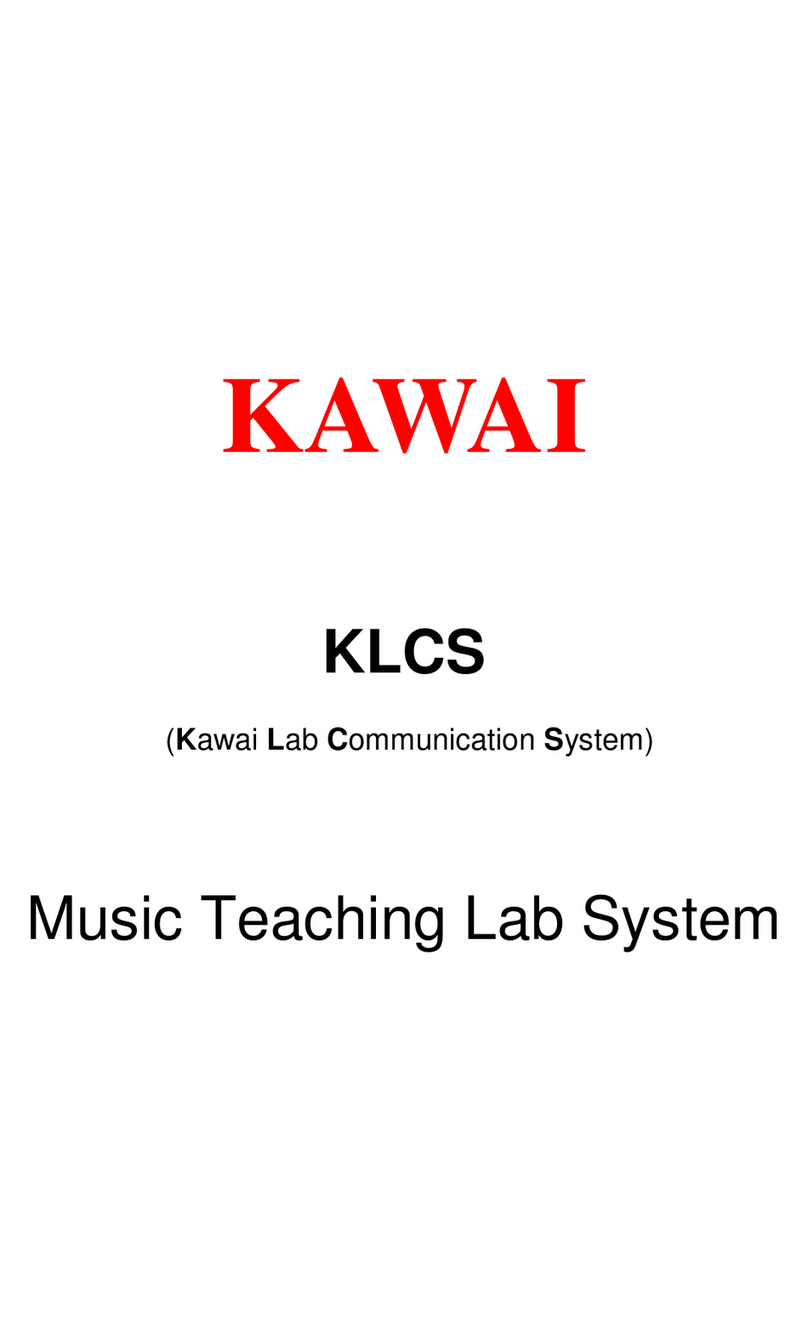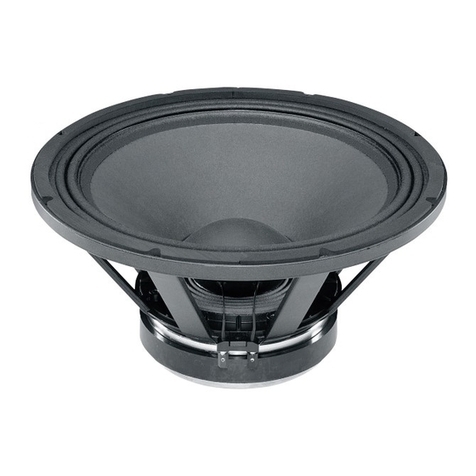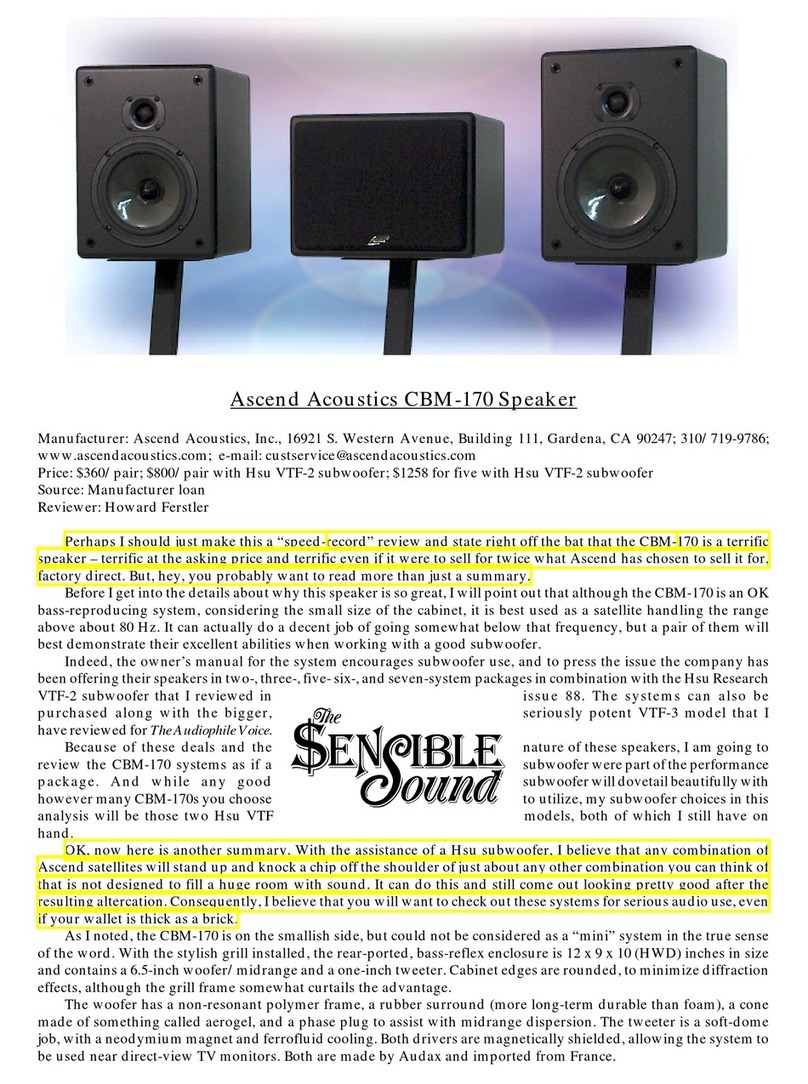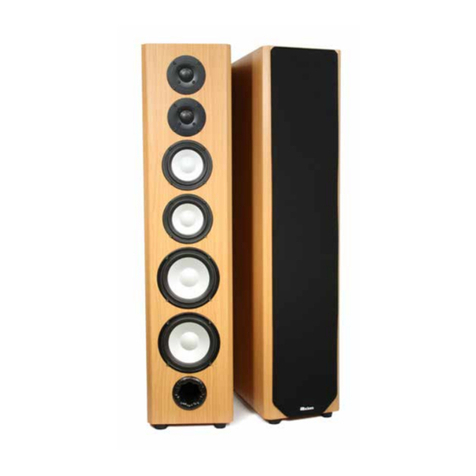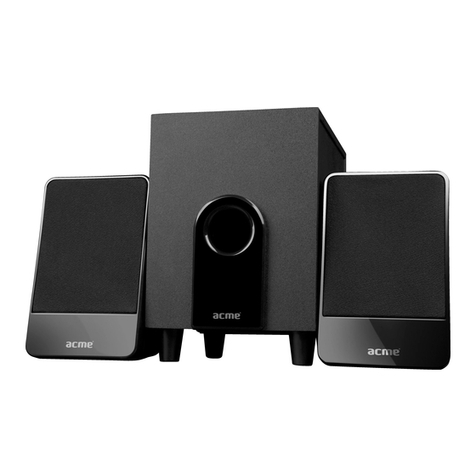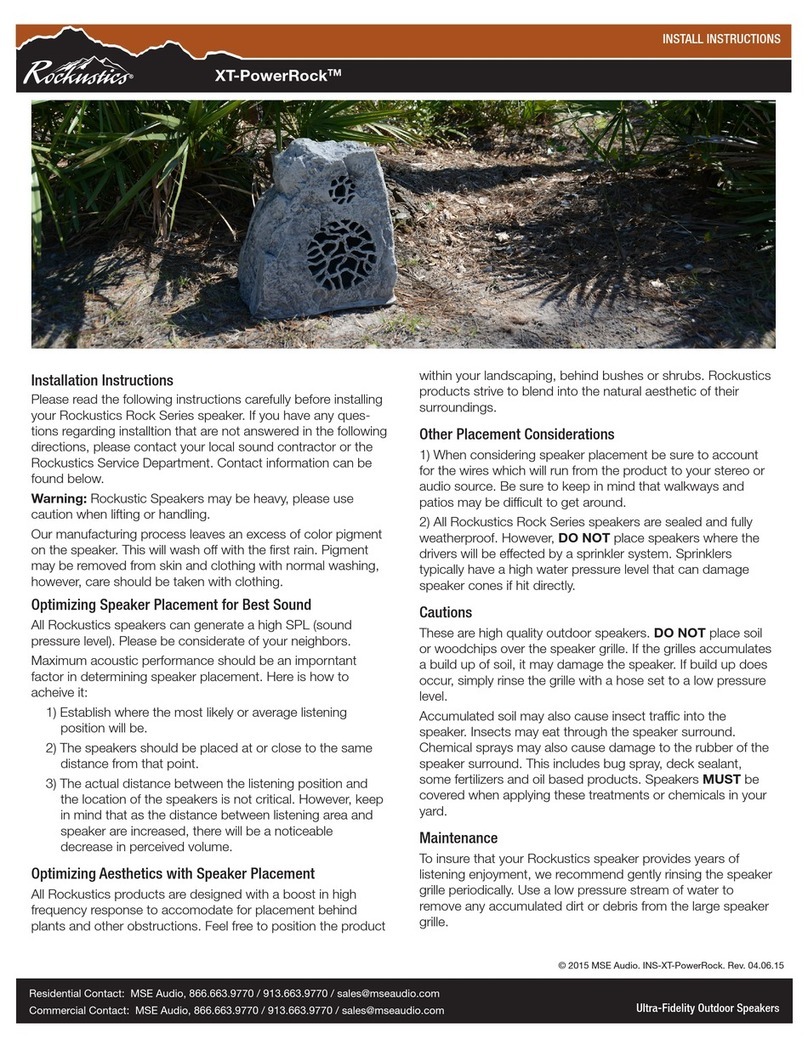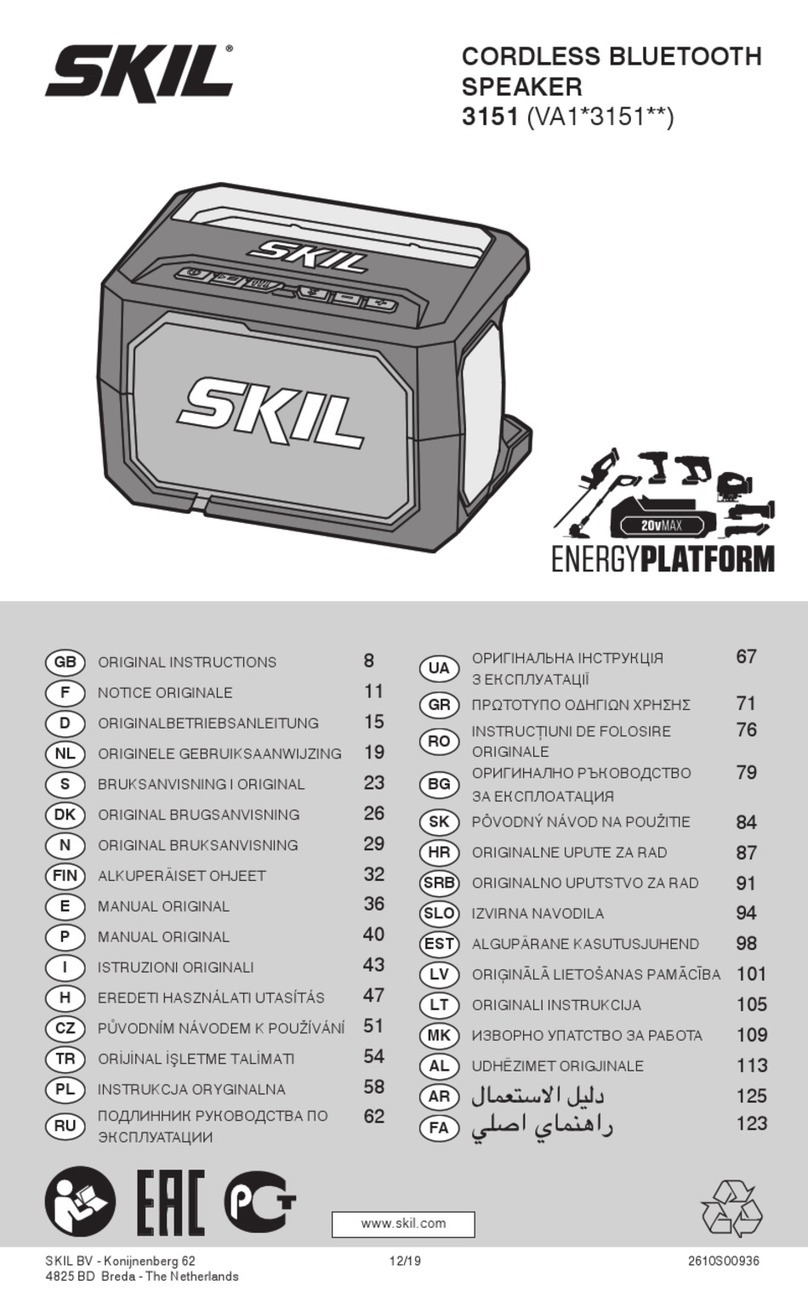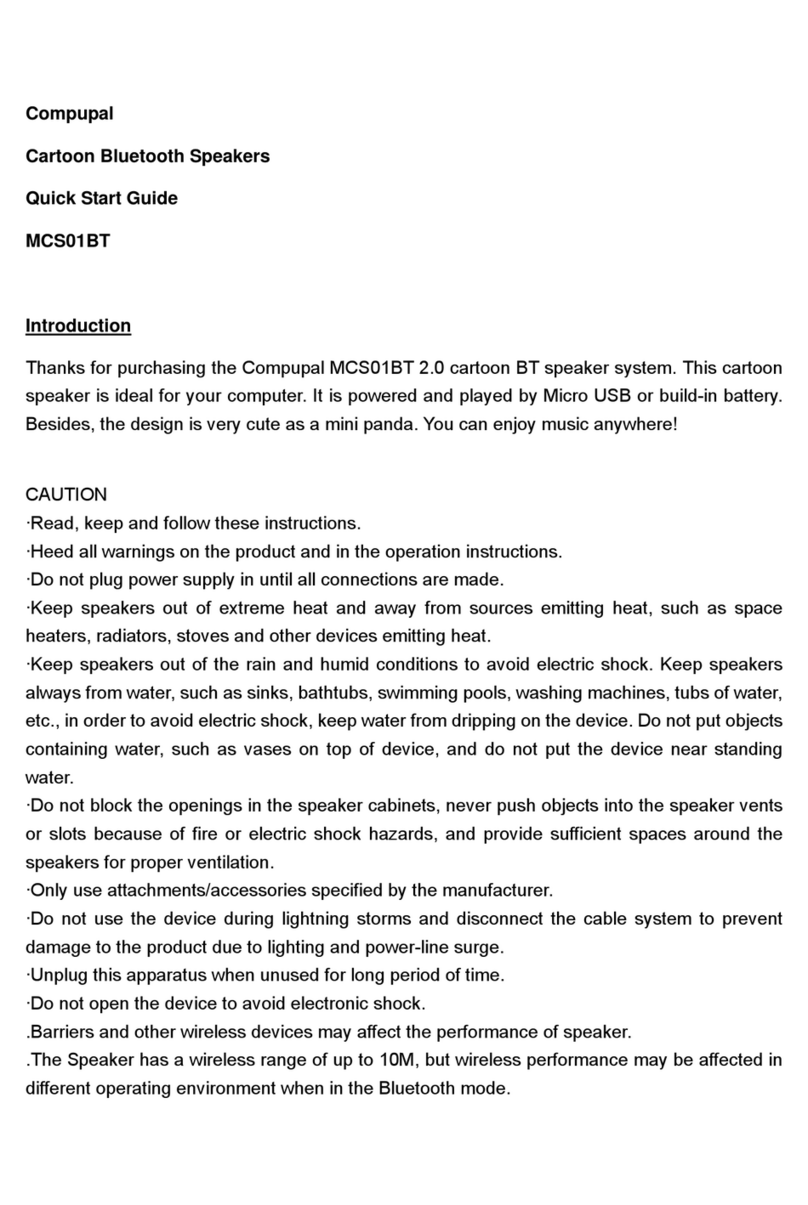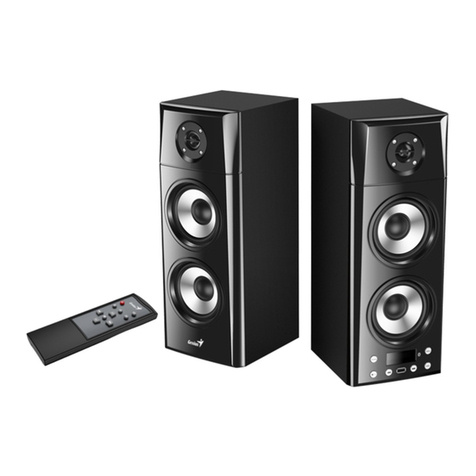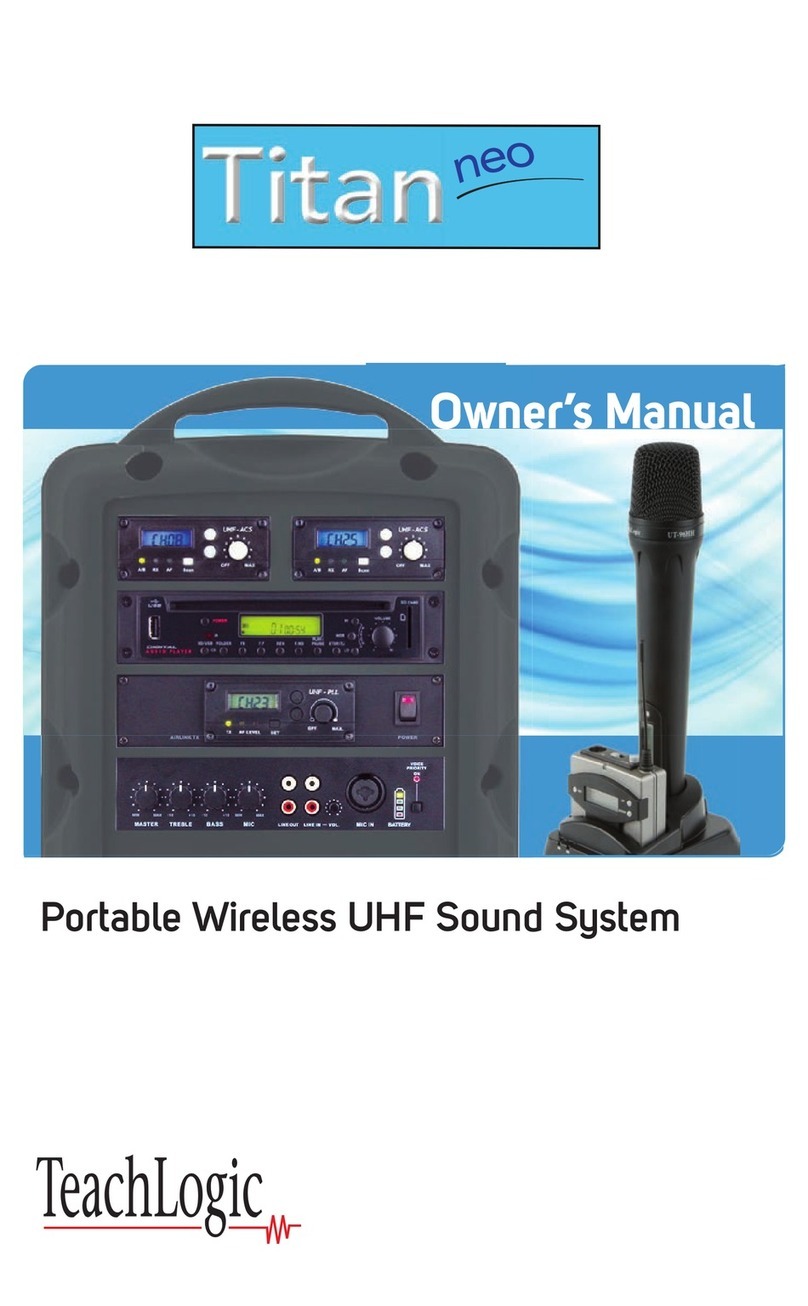Xtreme Classic Line User manual

CLASSIC LINE
CLASSIC LINE
User’s manual
1. Safety instructions
It is very important that loudspeakers systems are used in a safe
manner. Professional loudspeakers are capable of producing ex-
tremely high sound levels and should be used with care. Hearing
loss is cumulative and can result from levels above 90 dB if people
are exposed for a long period. Never stand close to loudspeak-
ers driven at high level. For stacking, ensure that the floor or stage
is level and solid. Do not stack speakers too high outdoors where
winds could topple the stack.
Fig. 1 Classic Line systems, flying configuration
Flying systems should only be assembled by a trained and expe-
rienced crew, working in association with professional riggers. All
Classic Line custers must be hung from secure and appropriately
load rated rigging points.
2. General information
The X-Treme Classic Line loudspeaker systems are highly efficient
touring products suitable for a wide variety of medium and large
scale live sound applications.
XTH is a highly efficient two-way (MF-HF) speaker with a 12” horn
loaded midrange loudspeaker and 2” compression HF driver. The
coaxial structure of the two medium-high sections allows an ex-
traordinary degree of freedom from phase distortions and also con-
trols the polar diagram perfectly. The compact design and angular
response free from obstructive side lobes allow the arrangement
of both simple as well as complex horizontal and vertical clusters.
CONTENTS
1. Safety instructions
2. General information
3. Instructions
4. Stacking or flying?
5. Stacking Guidelines
6. Subwoofers
7. General Guidelines for the use of subwoofers
8. Amplification
9. Connectors
10. Cable length
11. System configurations
2/7

User’s manual
Fig. 2 XTH loudspeaker system
Originally conceived for live concerts applications, the XTH element
can equally well be used wherever the best reproduction of voice,
songs and solo musical instruments is required.
The cabinet is made of 0.6” (15 mm) thick birch wood able to with-
stand any kind of mechanical stress without vibrating; it is designed
to make cluster installations starting from single modules easier in ac-
cordance with the sound dispersion angles on the horizontal plane.
Being the XTH system conceived to reproduce the frequency range
between 150 and 18k Hz, we recommend use of woofer-type
acoustic speaker, such as the XTL, to allow full extension of the
frequency response on low notes.
Fig. 3 XTL woofer
Purposely designed to reproduce the first octave of the band, the
XTL is the natural complementary system of the XTH loudspeak-
ers. Its overall dimensions are designed to make the arrangement
of array set up with the other speakers of the series easier. The
XTL is fitted with 18” woofer with high standard dynamics able to
support acoustic power as high as 1700 Watt. The XTL cabinet is
made of plywood with very high structural density and rigidity. The
development and the section of the loading were designed accord-
ing to loudspeaker parameters in order to guarantee the best total
efficiency and extension response. Finally, in order to complete the
series with a subwoofer able to provide reinforcement on the deeper
low frequencies, the XTS model has been developed.
Fig. 4 XTS subwoofer
The XTS is equipped with high dynamics 18” woofer mounted in
direct radiation in order to reproduce the frequency range between
30 and 90 Hz. Cabinet dimensions are the same as those of other
loudspeaker system of the series, so as to facilitate the stack use.
Fig. 5 XTHPS33 double subwoofer
The XTHPS33 is a double subwoofer which combines an 18” in
reflex configuration and a 15” in pass band system. The 18” is dedi-
cated to the lowest frequency range, while the 15” works better in
higher octaves. In this way, the first octaves frequency extension
(20÷40 Hz) is coupled with the “punch” effect typical of the second
and third octaves (80÷100 Hz), thanks to the pass-band configura-
tion. All is made to increase efficiency, to reduce distortion, to get
a good “punch” effect without renouncing the range of frequency
response.
The correct use is with electronic crossover set at 150 Hz with 24
dB/oct slope. The best performance is with an amplifier able to de-
liver power into 4 ohm with high current capability.
The subwoofer height corresponds exactly to two XTH and XTL
stacked speakers.
3/7

CLASSIC LINE
Fig. 6 Cross section of the long throw module XTLT
The XTLT is an extremely efficient 2 way system with a horn mid-
range with three 6” drivers and a tweeter with two 1” throat diam-
eter compression drivers. The system is a mid-high frequency long
throw module, designed to produce a planar wave front from an
8”x1” rectangular throat. It employs a pair of compression drivers
and three mid-range speakers; the special dual wave guide con-
tains a shared vertical slot able to radiate a coherent planar wave
front. It can be used as long throw module for traditional “Classic
Line” clusters. The main advantage of these types of system is the
energy savings arising from the narrowing of the vertical directivity
and having highly directive sources that, in addition, generate sound
waves that attenuate by only 3 dB for every doubling of distance as
opposed to 6 dB for conventional systems. The XTLT neodymium
drivers are mounted on a special aluminium heat sink for increased
power handling and reduced power compression. While the planar
wave driver is a distinctive new transducer engineered to radiate a
coherent planar wave front from a rectangular piston without inter-
nal diffraction, the XTLT horn loading system uses more conven-
tional wave guide design techniques to reshape the compression
driver’s spherical wave front into planar wave front.
3. Instructions
The “Classic” configuration consists of the XTH, XTL, XTS and XTLT
speakers which can be set directly on the floor as well as suspend-
ed. The back angle of the cabinets allows the correct arrangement
of the speakers, so that the nominal scattering values in the horizon-
tal plane are respected. A homogenous horizontal covering without
any phase interference is made possible by the application of the
configuration formed by two XTH and XTL systems. Floor stacks
are generally made by placing the loudspeaker systems directly
one on top of the other. Specifically, as there is no vertical angula-
tion among the different XTH speakers in a stacked configuration,
a coupling effect on the medium-high frequencies is obtained, in-
creasing the vertical directivity and allowing the achievement of an
extraordinary coverage, even at a long distance.
Classic Line clusters can be created by placing different XTH speak-
ers side by side, with angles between twenty and thirty degree on
the horizontal plane.
In case of angles of lower degree between cabinets, you will get a
lower horizontal coverage and a higher acoustic pressure level in the
central axis of the cluster.
In any case the horizontal plane coverage should not exceed the
listening area in order not to send out emissions to areas that might
create undesired sound reverberation and interference or that may
lie outside the musical event.
The positioning of a vertical cluster of loudspeaker systems de-
pends on both the height of the system from the floor as well as
the required coverage area. We generally recommend you employ
an angle of five degree between two adjacent module cabinets in a
suspended cluster.
Fig. 7 Clusters for a 180° horizontal coverage
4. Stacking or flying?
Although suspended systems are generally preferred by most
sound engineers, there are good arguments to support both solu-
tions. In many cases the answer is dictated by logistics that are
venue-specific, i.e. sometimes it is not possible to hang the PA.
Stacking on stage lowers the perceived sound image to stage level
which is beneficial in small venues. Stacking also offers more low
frequency SPL due to enhanced floor coupling and, since XTH has
less SPL attenuation from the front to the back of the audience than
traditional systems, this allows a stacked system to project further.
In addition, for geometric reasons a stacked array can provide more
extended vertical coverage than a flying one. For these reasons,
stacking makes sense in small configurations where only a few ele-
ments can optimize audience coverage.
Flying systems are the best solution to achieve uniform sound pres-
sure level and even tonal balance over the entire audience only if
the number of elements arrayed is sufficient to provide the neces-
sary front to rear coverage. Flying is also an excellent solution for
sightline problems - that commonly occur - and provides better high
frequency penetration into the audience with reduced shadowing ef-
fects. For hung configurations, additional speakers are added to cov-
er center or front-fill requirements and to help pull the localization im-
age down towards the stage for the first 10-20 rows of the audience.
4/7

User’s manual
5. Stacking Guidelines
The sound designer must know if the audience is standing or seat-
ed, but the bottom of the cluster should - in any case - be higher
than the heads of the first rows of the audience and the lowest ele-
ment tilted downwards.
If the cluster is too low, the first rows receive too much SPL and
audience members directly in front of the system act as an acoustic
screen for the rows behind them (shadowing). Ideally, the MF-HF
speakers should be slightly above the audience (not lower than 2
m or 6.5 ft above floor level), with a proper volume regulation as
necessary.
Note: for extended bandwidth applications, a stack of 2 XTHPS33
subwoofers, in horizontal position, provides a convenient stacking
platform at a height of 1.2 m above ground level.
6. Subwoofers
Subwoofers are used to extend the frequency response of the stand-
ard system (XTH+XTL) up to to 25-30 Hz and to increase the overall
SPL without increasing the potential for audience hearing loss.
7. General Guidelines for the use of subwoofers
The number of subwoofers to be used depends on 3 parameters:
1) Number of XTH-XTL elements. The standard number of XTS
subwoofers recommended is a 1:1 ratio.
2) Type of program material. Standard subwoofer ratios are rec-
ommended for classical music or for background music. For these
applications, subwoofers act as a low frequency extension for
XTH+XTL system and provide approximately 6 dB of low frequency
contour. In this case, the overall system functions as an extended
bandwidth 4-way system in tri-amplification. For more demanding
rock music applications, a ratio of 1:2 (
1 XTH+XTL - 1 XTS
) is recom-
mended to provide a more suitable low frequency contour).
3) Type of venue or installation. In open-air, when subs are
ground stacked, the quantity remains standard.
8. Amplification
X-Treme Classic Line speakers are designed to be used with profes-
sional power amplifiers capable of producing the following outputs
into 8 Ohm:
XTH: 550 W
XTL: 850 W
XTS: 1200 W
and into 4 Ohm:
XTLT: 460 W
Care should be taken to avoid amplifier clipping. It is important to
understand that a low power amplifier driven into clipping is more
likely to damage a loudspeaker then a higher power amplifier used
within its ratings. This is because music signals have a high peak-
to-average factor. When an amplifier is severally overdriven, its out-
put waveform is clipped (its peaks are squared off) – reducing the
crest factor. In extreme cases, the waveform can approach that of
a square wave. Furthermore, an amplifier normally consumes far
more electric power under these conditions than its undistorted rat-
ed power output. The use of very high power amplifiers with output
greater than those recommended is discouraged.
Care should be taken to avoid switch-on surges, which can result in
momentary power peaks in excess of specified ratings.
When powering up a sound system it is important to switch on the
amplifiers after the electric supply of the mixer and control electron-
ics have stabilised. When powering down the system, reverse the
sequence and switch off the amplifiers first.
9. Connectors
The rear panel of Classic Line loudspeaker systems are fitted with
two Neutrik Speakon NL4 connectors. All four pins of both connec-
tors are wired in parallel. The XTH and XTLT uses pin assignments
2+/2-. Pins 1+/1- are designed to XTL and XTS. Using the male con-
nector as the input, the female connector allows for direct connec-
tion to additional speakers (link or bridge connection).
PINS 1+ 1- 2+ 2-
NL4
LF+
(XTL)
(XTS)
LF-
(XTL)
(XTS)
HF+
(XTH)
(XTLT)
HF-
(XTH)
(XTLT)
4 pins Speakon connector:
1+: Positive (+) woofer - XTL, XTS
1-: Negative (-) woofer - XTL, XTS
2+: Positive (+) satellite - XTH, XTLT
2-: Negative (-) satellite - XTH, XTLT
10. Cable length
When connecting loudspeaker systems to an amplifier, it is recom-
mended that the return resistance of the cable used is less than one
tenth of the nominal impedance of the system or systems in parallel.
The table below gives an indication of the maximum permissible
cable runs for various conductor cross-sectional areas.
Maximum Cable Run
Conductor CSA 4 ohm 8 ohm
1.0 mm211 m 22 m
1.5 mm217 m 34 m
2.0 mm222 m 44 m
2.5 mm229 m 58 m
4.0 mm244 m 88 m
6.0 mm266 m 132 m
11. System configurations
X-Treme Classic Line enclosures can be used with analog control-
lers which perform system specific equalization, crossover and lim-
iter functions. More complex set-ups will benefit from the use of a
digital DSP - X-Treme Classic systems can be used with XTDP26
Digital Speaker Management or any other professional digital con-
troller. Whichever controller is used, it is important that it has fast
attack limiters to prevent amplifiers from clipping. This requires that
the controller’s limiter thresholds be set to match the sensitivity of
the amplifier. A system operated in this way - with amplifiers having
a power rating as recommended and used by experienced profes-
sional sound engineers - should be sufficiently protected from over-
driving. It is suggested that you refer to the controller user’s guide for
further information on how to set limiter thresholds.
The nominal horizontal coverage pattern of XTH is 60-degrees. This
has been found to be the optimum figure to meet the requirements
of both small scale and larger scale use.
5/7

CLASSIC LINE
4 Ohm connection
2,6 Ohm connection
Configurazione a 8 Ohm
Configurazione a 4 Ohm
XTH
XTL
XTS
Configurazione a 2,6 Ohm
8 Ohm configuration
4 Ohm configuration
XTH
XTL
XTS
2.6 Ohm configuration
Examples:
XTH
XTH
XTL
XTL
XTS
XTS
XTH
XTH
XTL
XTL
XTS
XTS
With the rear edges touching, the inter-cabinet angle between en-
closures is the right one for having a correct overall dispersion. The
nominal crossover point between the XTH and XTL is 200 Hz, an
LPF on XTH - set at 200 Hz (slope >20 dB/oct) - and a HPF on XTL
- at 150 Hz - are suggested.
Recommended crossover cut for subwoofers is 120 Hz.
X-Treme Classic Line systems combined with the appropriately
configured controller exhibit an essentially flat on-axis frequency re-
sponse.
Equalization to compensate for a particular acoustic environment
mat be performed where required. When speakers are vertically po-
sitioned in many different clusters, they may benefit from equaliza-
tion adjustement to reduce the effect of mid-low frequency build up
inherent in the use of multiple arrayed enclosures.
6/7

7/7
Contacts
X-Treme Audio reserves the rights to change or modify products and specifications at any time without prior notice.
X-Treme and the corresponding symbols, images and registered trademarks are of exclusive property of Sound Corporation group. © 2010 Sound Corporation group. All rights reserved.
X-Treme Headquarters:
via Monti Urali, 33 - 42100 Reggio Emilia - Italy
tel. +39 0522 557735
fax +39 0522 391268
For general information: [email protected]
For commercial information: sales@x-tremeaudio.com
For technical support/information: [email protected]
www.x-tremeaudio.com
Table of contents
Other Xtreme Speakers manuals

